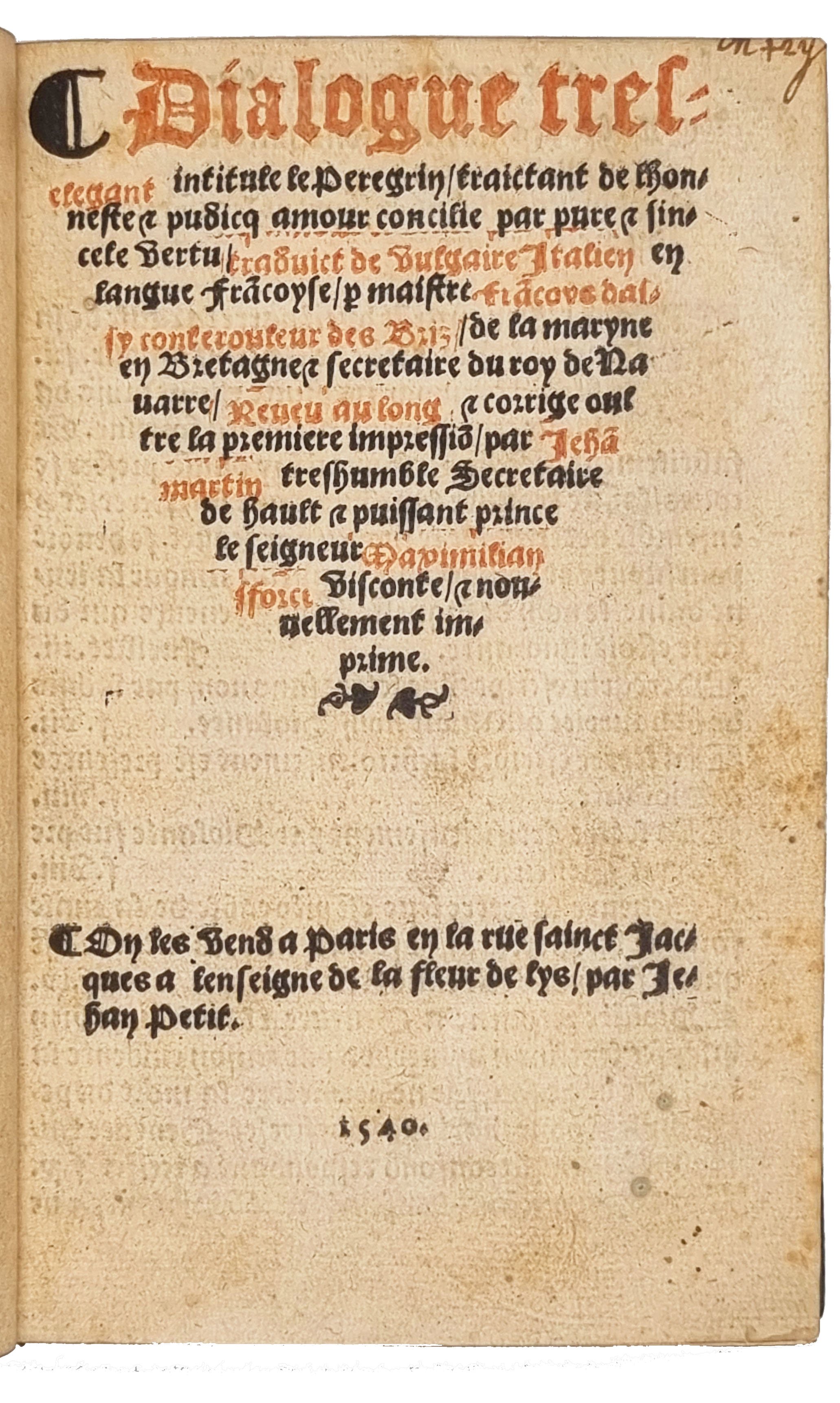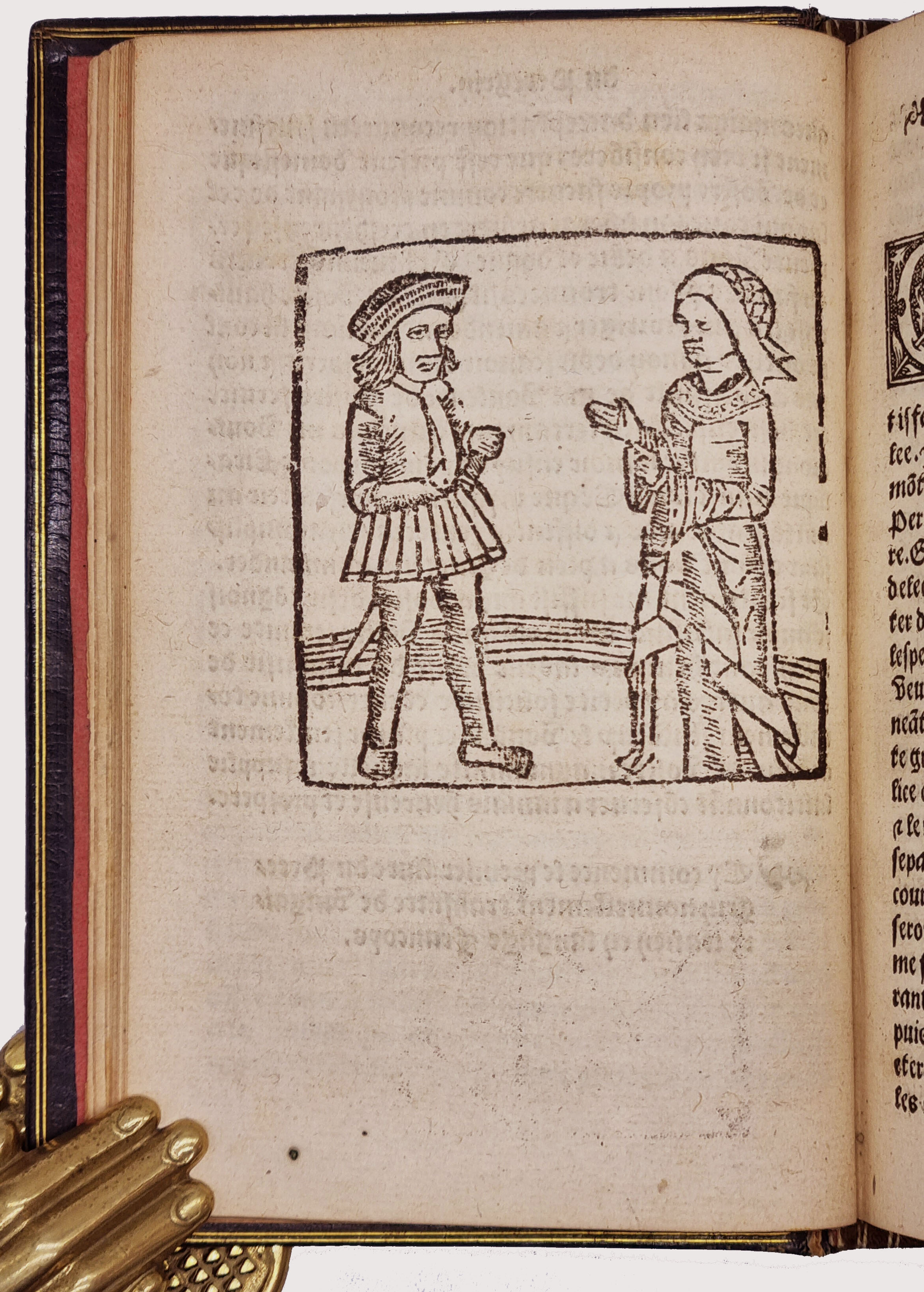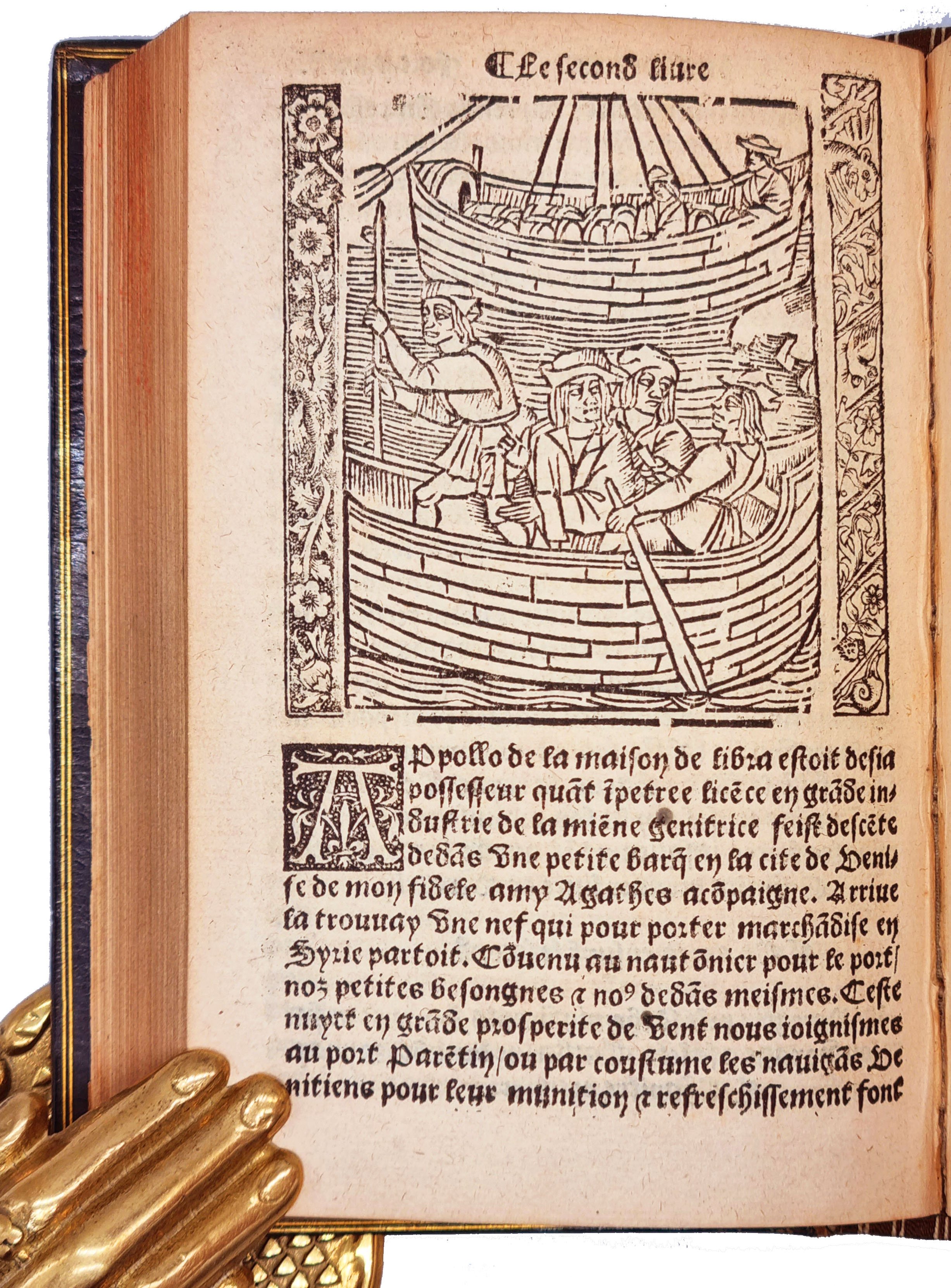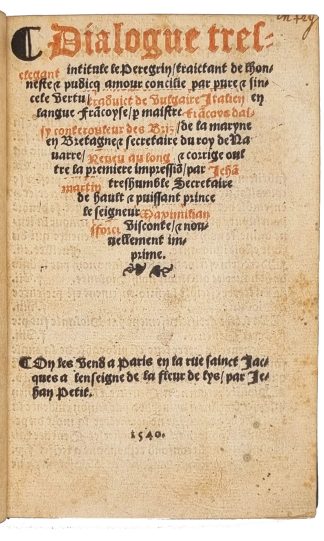CAVICEO, Jacomo
Dialogue treselegant intitule le Peregrin, traictant de lhonneste et pudicq amour concilie par pure et sincere vertu
Paris, Jehan Petit, 1540£9,750.00
8vo. ff (xii) 327, (lacks last, blank). Lettre Bâtard. Title in red and black, small woodcut white on black criblé initials, 3 charming woodcut illustrations introducing each book, bookplates of Camille Aboussouan, on pastedown and fly (the second engraved by Belmer). Title slightly dusty, mostly light age yellowing, cut a little close at head, a few headlines fractionally shaved. A very good, clean, copy in early 19th-century blue straight-grained morocco gilt, by C. Smith with his ticket on fly, covers gilt ruled to panel design, spine with gilt ruled raised bands, aeg. extremities slightly rubbed.
Rare, beautifully printed and illustrated popular edition of Francois Dassi’s French translation of Caviceo’s ‘Libro del Peregrino’, first published in the author’s native Parma in 1508, and remarkably popular, both in Italy and France, where it went through more than twenty editions during the following fifty years, though it has not been reprinted in its entirety since 1559, perhaps due to its robust attitude to physical love. Caviceo introduces his romance with the appearance of Boccaccio’s shade who praises the book’s dedicatee, Lucrezia Borgia; unsurprisingly the Peregino is full of echoes of Boccaccio’s writings, and is also imbued with the atmosphere of the Ferrarese court of Ercole I d’Este which Caviceo knew well. He appears also to have used Colonna’s Hyperotomachia as a model, as the Peregrino similarly contains a multiplicity of digressions on a diverse range of subjects in a Latinate prose full of classical allusions. As the title suggests much of the romance is concerned with travel, based on the author’s own experiences, including voyages to the middle east, Mount Sinai and Cyprus. These adventures often serve as a pretext for a display of humanist erudition, courtly speeches, with disquisitions on natural philosophy and neo-platonic theories of love. A good deal of the work is comic, sometimes unsubtle, as in the episode when Peregrino steals, via a sewer, into what he believes is his ladies chamber only to discover, at a critical moment, that he entered a neighboring house and is in the wrong bed. All these disparate elements are woven into the story of Peregrino, an ardent lover, who after many trials on behalf of his love Ginevra, eventually wins her hand, only to witness her death shortly after the birth of her first child. The story is innovative firstly in its narrative technique, the entire story is told by the hero’s shade and is in the first person, (much of the book is composed of dialogue) and secondly in its inclusion of a host of famous contemporaries in his fictional narrative, some recently dead, but most still living at publication. It is therefore quite surprising that the work was so popular in France where few of this gallery of local figures would have been known to its readers. The book was translated into French by Francois Dassi, a lawyer and secretary to Henri d’Albert king of Navarre. The first French edition appeared in 1527, at a time when there was considerable interest in France for all things Italian. Dassi made no attempt to modify the passages of the original which deal with specifically Italian figures, and his translation is complete and faithful. Like the Fairfax Murray copy, this copy lacks the final leaf, ‘probably blank’. This Paris edition appears to have been shared by many printers, P. Sargent (BL copy), F. Gilbert (Fairfax Murray copy), A. Lotrian (BNF copy) as well as Jean Petit, all of which are extremely rare; we have not found a copy of the Petit imprint recorded online.
BM STC Fr. 16C p. 345, under Peregrino, (variant imprint). Fairfax Murray French, I 80 (variant imprint). Brunet I, 1701 (other editions).In stock








